Protein in 3 Oz Roast Beef
Are you starting a high-protein diet and trying to hit your macros? If you are looking for a way to increase protein while keeping carbs low, there is no better option out there than quality meat protein.
As you plan your menu on the keto diet, this meat protein guide will help you make the smartest buying decisions. Plus, learn how to plan a healthy diet low in saturated fat and high in muscle-building protein.
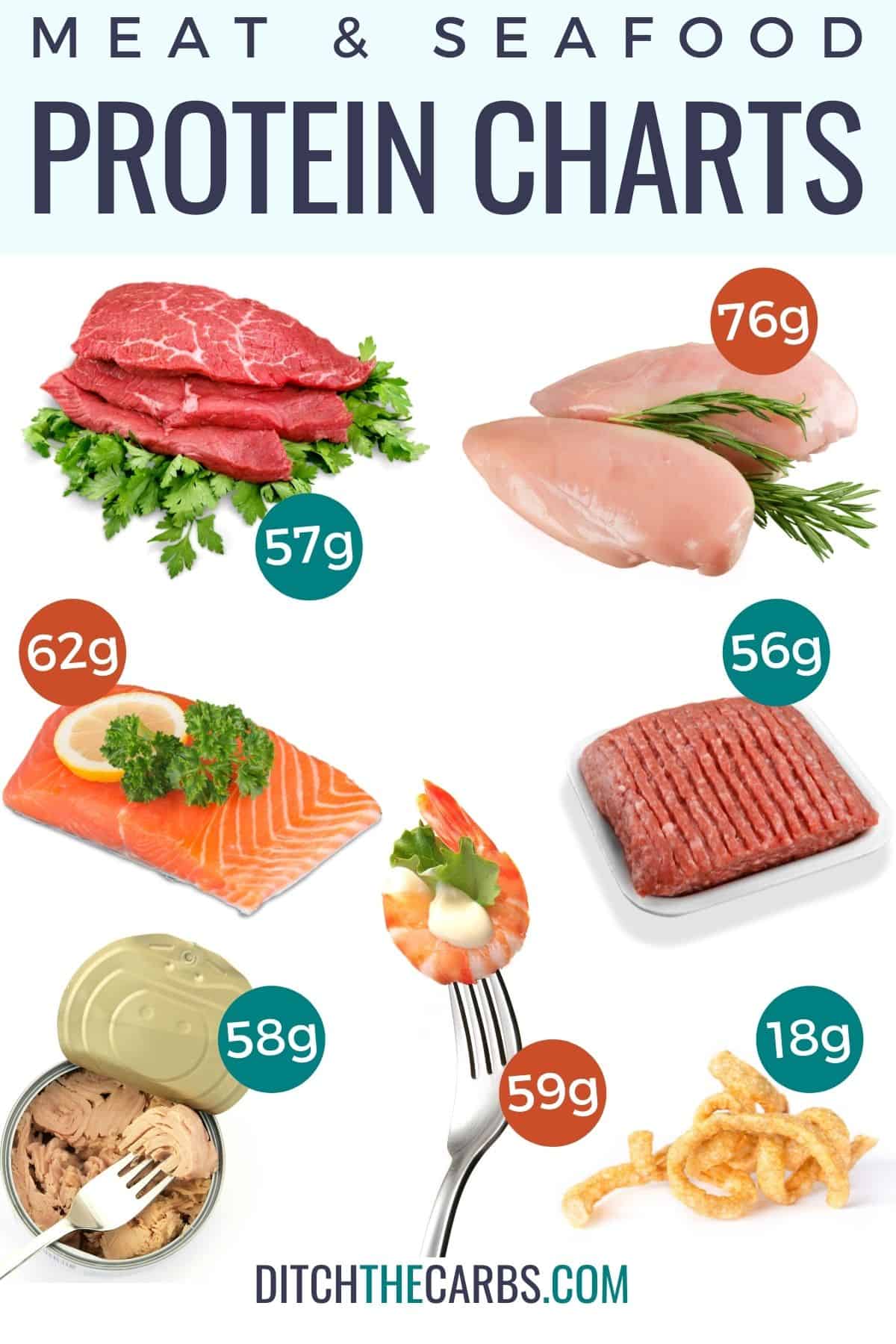
Jump to:
- Nutrition in meat
- What meat has the most protein?
- What is chicken plumping?
- Meat protein: types of meat
- Plant-based protein foods
- Final thoughts
- 💬 Comments
Meat is delicious, nutritious, and you will reach your daily protein intake easily. That being said, not all types of animal proteins are the same.
- Chicken breast, skinless - 1 cup (245g) = 75.9g protein
- Chicken breast, skin eaten - 1 cup (245g) = 67.2g protein
- Salmon steak - 1 cup (245g) = 62.4g protein
- Ground beef 5% fat - 1 cup (217g) = 59.1g protein
- Ground beef 15% fat - 1 cup (217g) = 56.2g protein
- Prawns- 1 cup (245g) = 58.9g protein
- Tuna - 1 cup (227g) = 57.9g protein
- Pork roast - 1 cup (245g) = 56.7g protein
- Sirloin steak (fat eaten) - 1 cup (245g) = 56.9g protein
- Pork rinds - 1 cup (30g) = 18.4g protein
Nutrition in meat
One of the health benefits of a low-carb diet that's high in meat is that animal protein has all the essential amino acids our bodies need. Amino acids are essential for building muscle, the synthesis of hormones, collagen, enzymes, and neurotransmitters such as serotonin.
Protein is the building block of muscle, and it is vital to our health, especially on a high-protein low-carb diet.
Meat is incredibly nutrient-dense packed with iron, B-complex vitamins such as thiamine, riboflavin, niacin, vitamin B6 and the essential vitamin B12. Meat protein is a natural source of energy and nutrients such as iron and vitamin B12 can increase your red blood cells and lower the risk of anemia.
Which meat should you avoid?
Not all meat and food from animals are as good for you. Some ultra-processed deli meats are high in chemicals, preservatives, additives, and salt.
That's why it's important to choose high-quality meat, for example, processed meat like hot dogs do not have the same health benefits as a lovely grass-fed steak.
While lean meats such as lean ground beef can be a part of your diet, don't shy away from eating fattier cuts of meat either. Diets higher in fats can help you lose weight, stay satiated, balance your hormones and so much more.
Learn more about the benefits of healthy fats in this article.
What meat has the most protein?
Meat is made of protein, fat, and water. A high-fat cut of meat generally will have lower protein. Low-fat meat will generally have higher protein. Meat that has been brined and absorbed a lot of water will have lower fat and lower protein.
Looking to get the most bang for your buck? You may be surprised to hear that chicken breast has the most protein in it compared to all types of meat.
It has an impressive 30.9g of protein per 100g/3.5 ounces. BUT beware of buying chicken that has been pumped with water.
What is chicken plumping?
Chicken is often injected with salted water to keep the chicken meat moist, tasty, and tender. Water injected into chicken can be 15% - 30% of the chicken you are buying. This is called chicken plumping.
Why do they inject chicken meat? When they began to breed larger chickens, the protein of the chicken meat increased but their fat decreased, which made for dry bland tasting chicken.
The saline (salted water or brine) they inject into chicken meat also has natural chicken flavors, broth, lemon concentrates, and often corn syrup.
So next time you cook chicken and all that dirty water is at the bottom of your pan, it's water that has been added to increase the weight, but not the nutrition, of your meat.
Meat protein: types of meat
I'm going to cover the protein amounts in whole meats rather than processed ones. That's because a very important part of healthy eating is eating real, whole foods instead of processed meats filled with unnecessary carbs and starches, filler, additives, and preservatives.
Let's take a quick look at the most popular types of meat and how many grams of protein each of them has.
Chicken
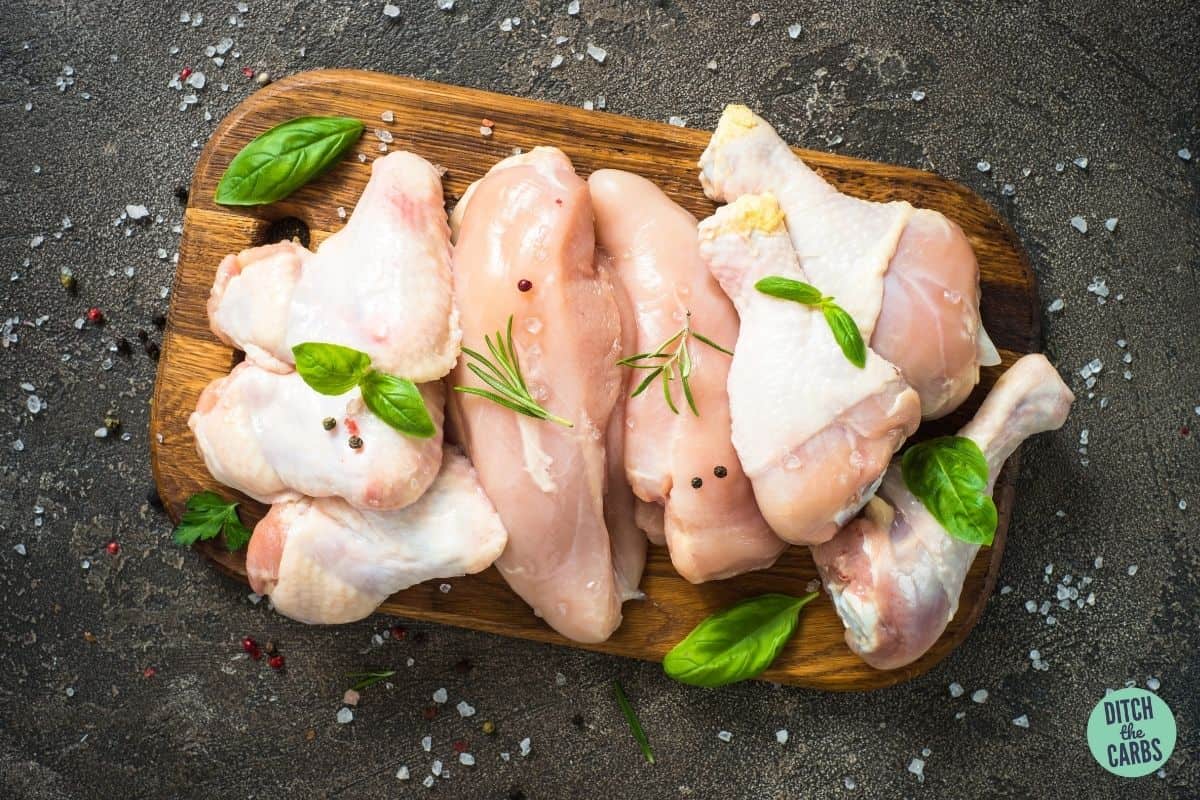
There are 31 grams of protein per 100g/3.5 ounces of skinless chicken breast.
The amounts are similar for chicken thigh and chicken drumstick. There are 28.2 grams of protein in a 3.5-ounce thigh and 27.3g of protein in a drumstick.
Many people can find chicken a bit boring, but the right seasoning can change everything! Here are 4 different ways to make amazing keto chicken.
| Per 100g/3.5 ounces | Protein g | Fat g | Calories |
| Chicken breast, skinless | 30.9 | 4.5 | 173 |
| Chicken thigh, skin eaten | 28.2 | 13.2 | 239 |
| Chicken drumstick, skin eaten | 27.3 | 10 | 206 |
| Chicken wings, skin eaten | 23.8 | 16.9 | 254 |
Pork
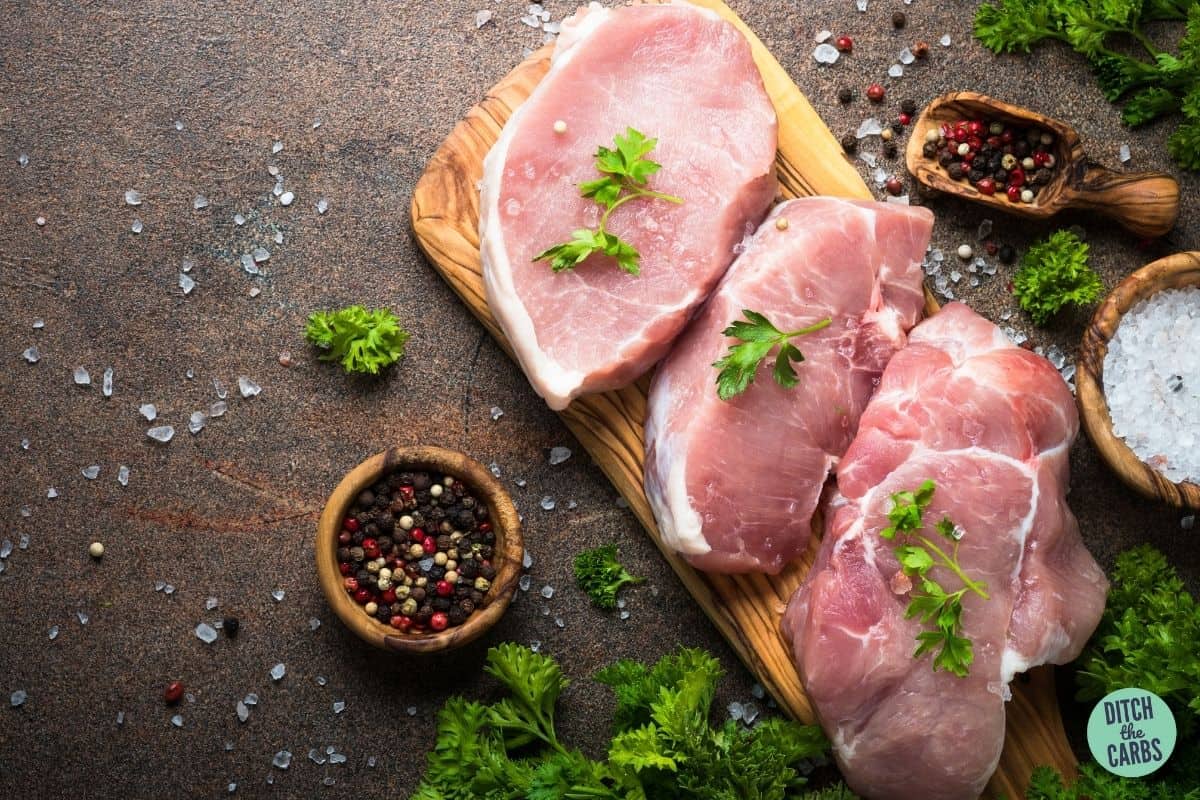
Lean pork like pork tenderloin is another healthy choice. Here's how much protein is in the different types of pork.
Bacon has the highest protein because it is often cured then dried so most of the moisture and water have been removed.
- Pork Tenderloin - 29g protein in 100g/3.5 ounces
- Ground pork - 21g protein in 100g/3.5 ounces
- Ham - 23g protein in 100g/3.5 ounces
- Bacon - 42g protein in 100g/3.5 ounces
- Pork ribs - 20g protein in 100g/3.5 ounces
If you are looking for a simple, yet delicious way to enjoy pork, I highly recommend this one-pan keto pork chop with butter garlic sauce. It's fantastic!
More keto pork recipes
- Keto pulled pork (in the slow-cooker)
- Best family-friendly pork recipes
- How to make pork rinds
- Pulled pork mac and cheese
- 30+ best side dishes for pork
| Per 100g/3.5 ounces | Protein g | Fat g | Calories |
| Pork tenderloin, no visible fat eaten | 28.8 | 5.5 | 170 |
| Ground pork, 4% fat | 21.1 | 4 | 121 |
| Ham, boneless, cured | 22.6 | 9 | 178 |
| Bacon, centre cut | 42.4 | 31.4 | 467 |
Beef
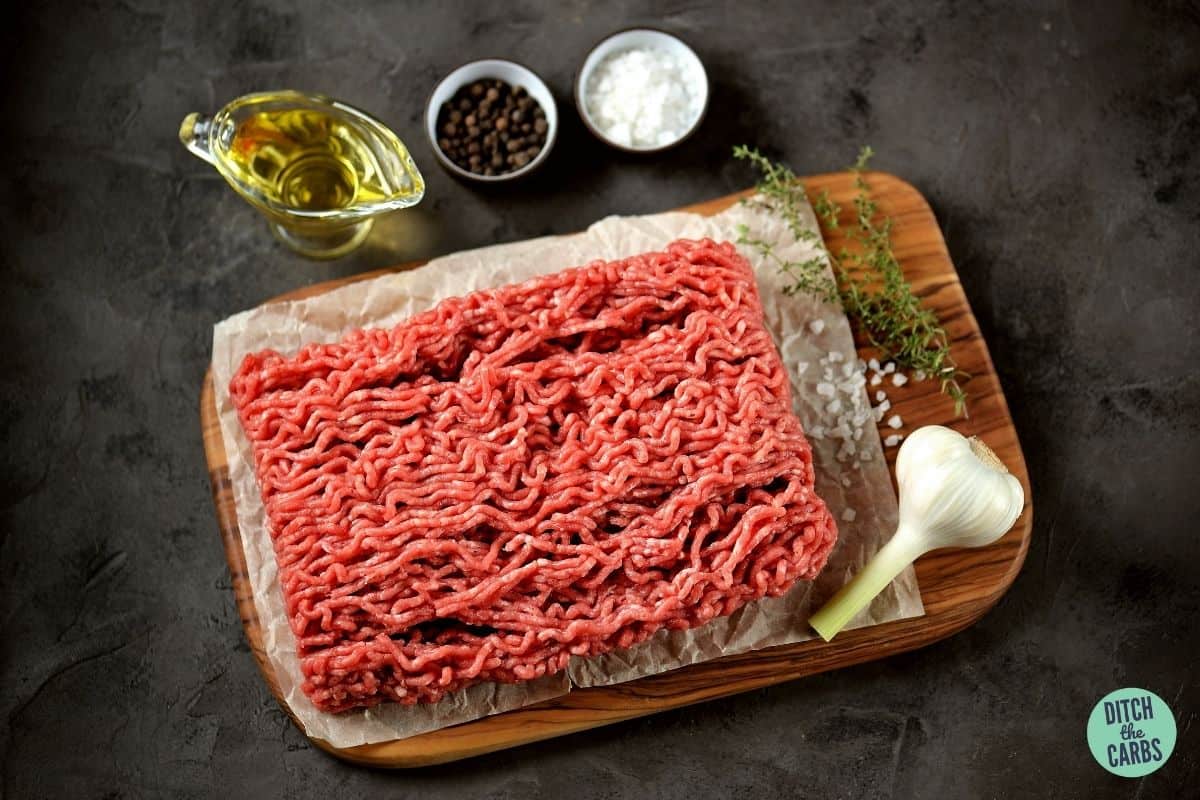
Some people who have been warned to cut back their saturated fat intake might want to eat less red meat. However, the World Heart Federation actually says fats protects us, carbs are harmful.
Lean beef can still be a healthy part of your diet as they tend to be higher in protein, but don't completely neglect the delicious fatty cuts.
- Lean ground beef - 27g protein in 100g/3.5 ounces
- Roast beef - 30g protein in 100g/3.5 ounces
- Round steak - 26g protein in 100g/3.5 ounces
- Sirloin steak - 27g protein in 100g/3.5 ounces
I use ground beef in particular quite often for meal prep. Want to do the same? Here are 20 keto ground beef meals that you can easily meal prep.
More keto beef recipes
- Keto cheeseburger casserole
- Keto chilli (chili dog casserole)
- Low-carb beef stroganoff (without pasta)
- Best side dishes to serve with beef
| Per 100g/3.5 ounces | Protein g | Fat g | Calories |
| Lean ground beef, 5% fat | 27.3 | 6.4 | 174 |
| Ground beef, 15% fat | 25.9 | 14.4 | 240 |
| Roast beef, no visible fat eaten | 29.9 | 4.5 | 160 |
| Sirloin steak, fat eaten | 26.7 | 15.1 | 250 |
Venison
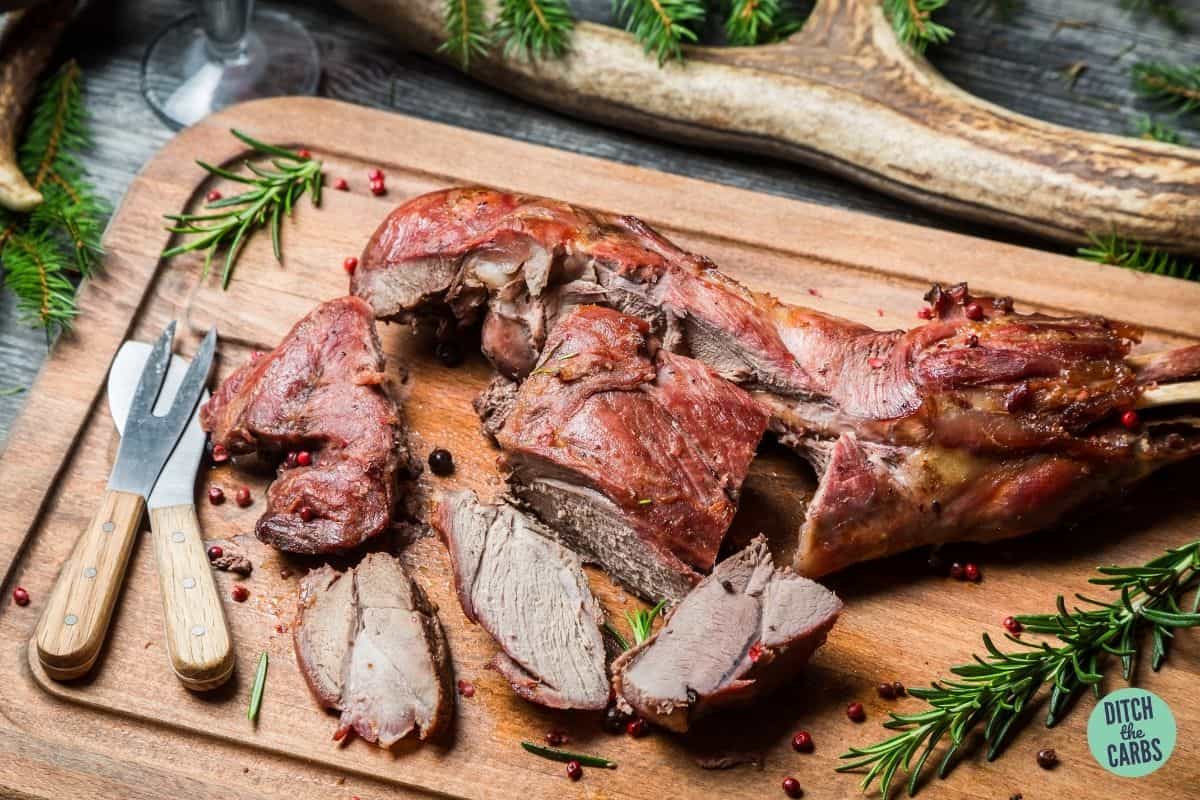
Another name for deer meat is venison and it is a complete protein source as well. There are 26 grams of protein in 3 ounces of venison.
| Per 100g/3.5 ounces | Protein g | Fat g | Calories |
| Venison, ground | 26.5 | 8.2 | 187 |
| Venison, wild, steaks | 35.6 | 2.5 | 165 |
| Venison, jerky | 33.9 | 22.4 | 404 |
| Venison, ribs | 30.2 | 3.2 | 158 |
Turkey
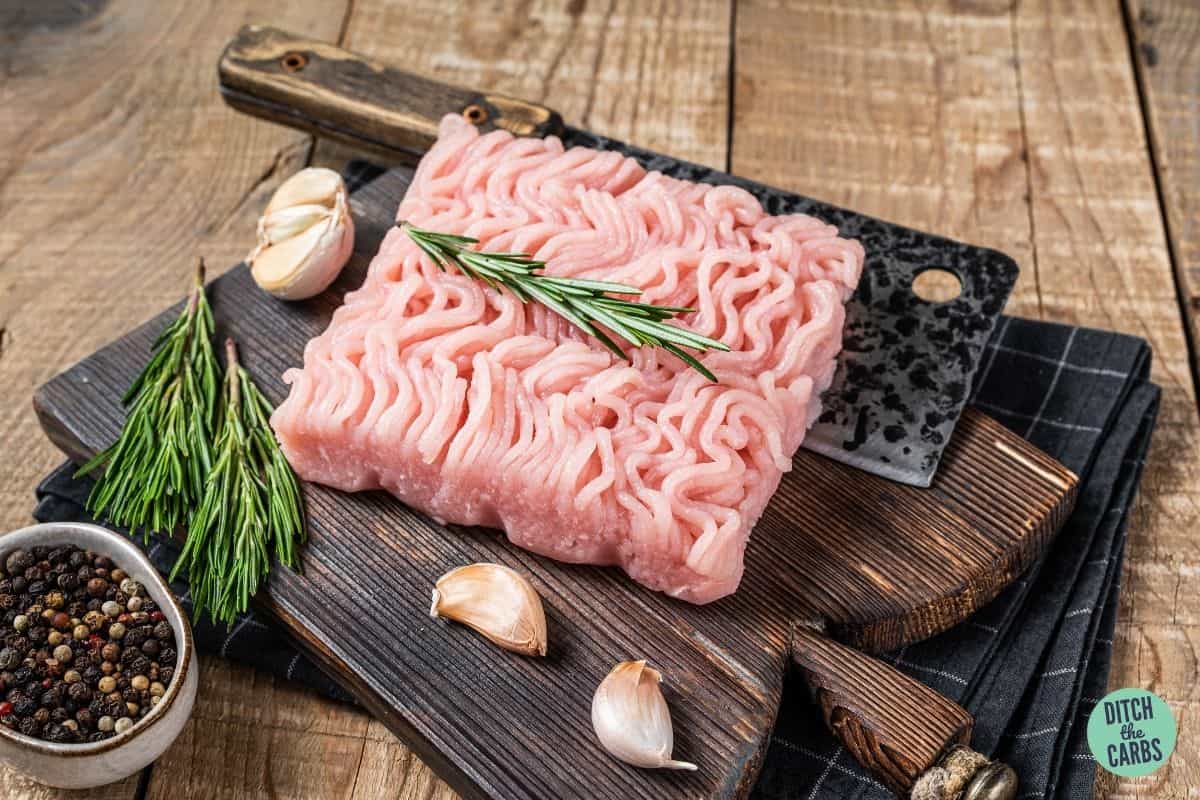
Turkey is another lean protein that you can get in three different ways. Here's how much protein is in each type.
- Turkey breast - 30g of protein in 100g/3.5 ounces
- Ground turkey - 19g protein in 100g/3.5 ounces
- Turkey bacon - 29g protein in 100g/3.5 ounces
| Per 100g/3.5 ounces | Protein g | Fat g | Calories |
| Turkey breast, no visible fat eaten | 30.1 | 2.1 | 147 |
| Turkey breast, visible fat eaten | 27.3 | 10 | 206 |
| Ground turkey, 7 % fat | 18.7 | 8.3 | 150 |
| Turkey bacon | 29.5 | 25.9 | 368 |
Seafood
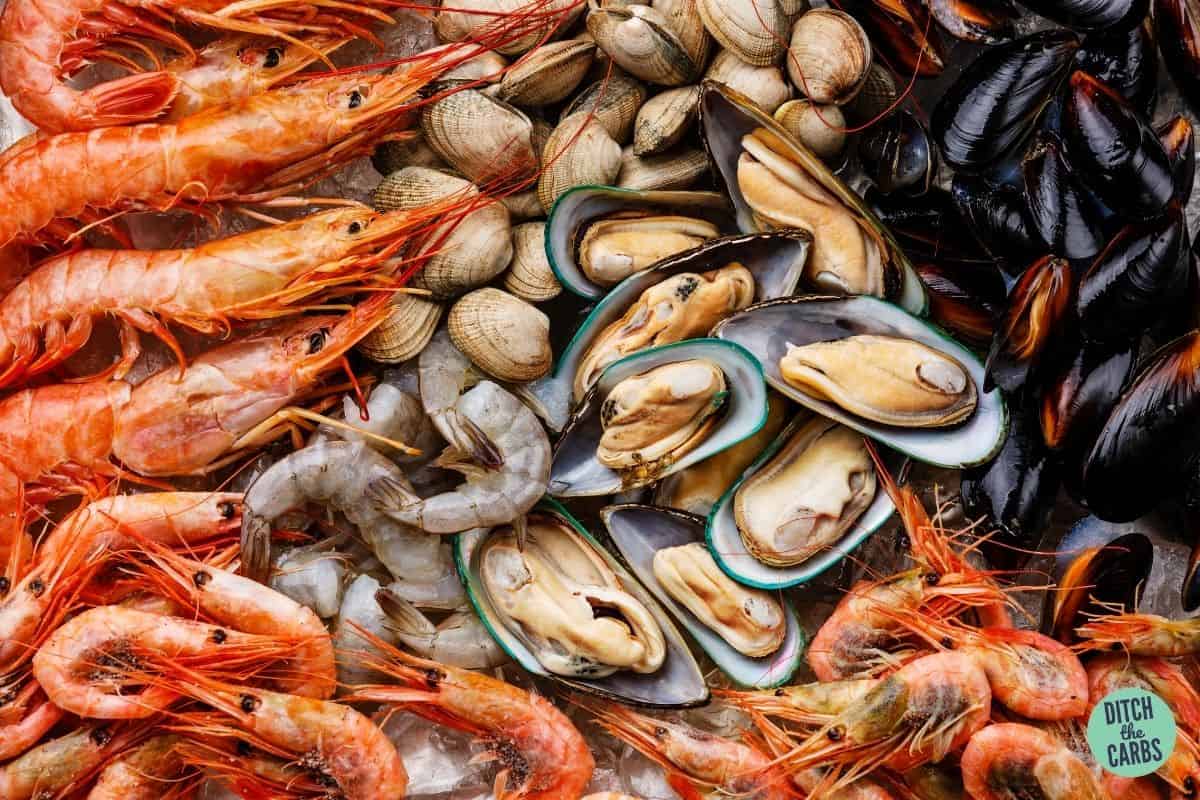
Another tasty way to eat more protein is by eating seafood.
Fatty fish like salmon is fantastic for brain and gut health. There are 25 grams of protein in a small fillet of salmon.
In my opinion, cooked shrimp and mussels are some of the most delicious protein sources found in the ocean. There are 23 grams of protein in 100g of shrimp.
Canned tuna is a very versatile type of seafood that lasts a long time on your shelf. There are 25 grams of protein in 100g/3.5 ounces.
More keto salmon recipes
- How to cook salmon in the slow-cooker
- How to cook salmon in the Instant Pot
- Low-carb salmon quiche (blender recipe)
- Best side dishes to serve with salmon
| Per 100g/3.5 ounces | Protein g | Fat g | Calories |
| Salmon fillet | 25.3 | 12 | 210 |
| Shrimp | 22.8 | 1.7 | 119 |
| Crab, canned, drained | 17.9 | 0.7 | 83 |
| Tuna, canned, drained | 25.5 | 0.8 | 116 |
Plant-based protein foods
There are also lots of high-protein foods that come from plants instead of animals. Some people prefer to eat plant-based protein because it has less saturated fat, they may think it is better for the environment, they're heart-healthy, or for ethical reasons.
Plant proteins are promoted to be beneficial for your heart health if you're not eating meat. Eating them can lower your heart disease risk and even increase weight loss. And, the good news is there are plenty of options that aren't loaded in carbs either!
However, the flip side is that switching from meat to plant protein can have dangerous health consequences. Most plant-based meat alternatives actually exceeded the daily recommended allowance for saturated fat, sugar, salt.
Plant-based meat alternatives provide below the daily requirements for Vitamin B12, calcium, zinc, magnesium, and potassium.
Best vegetarian protein sources
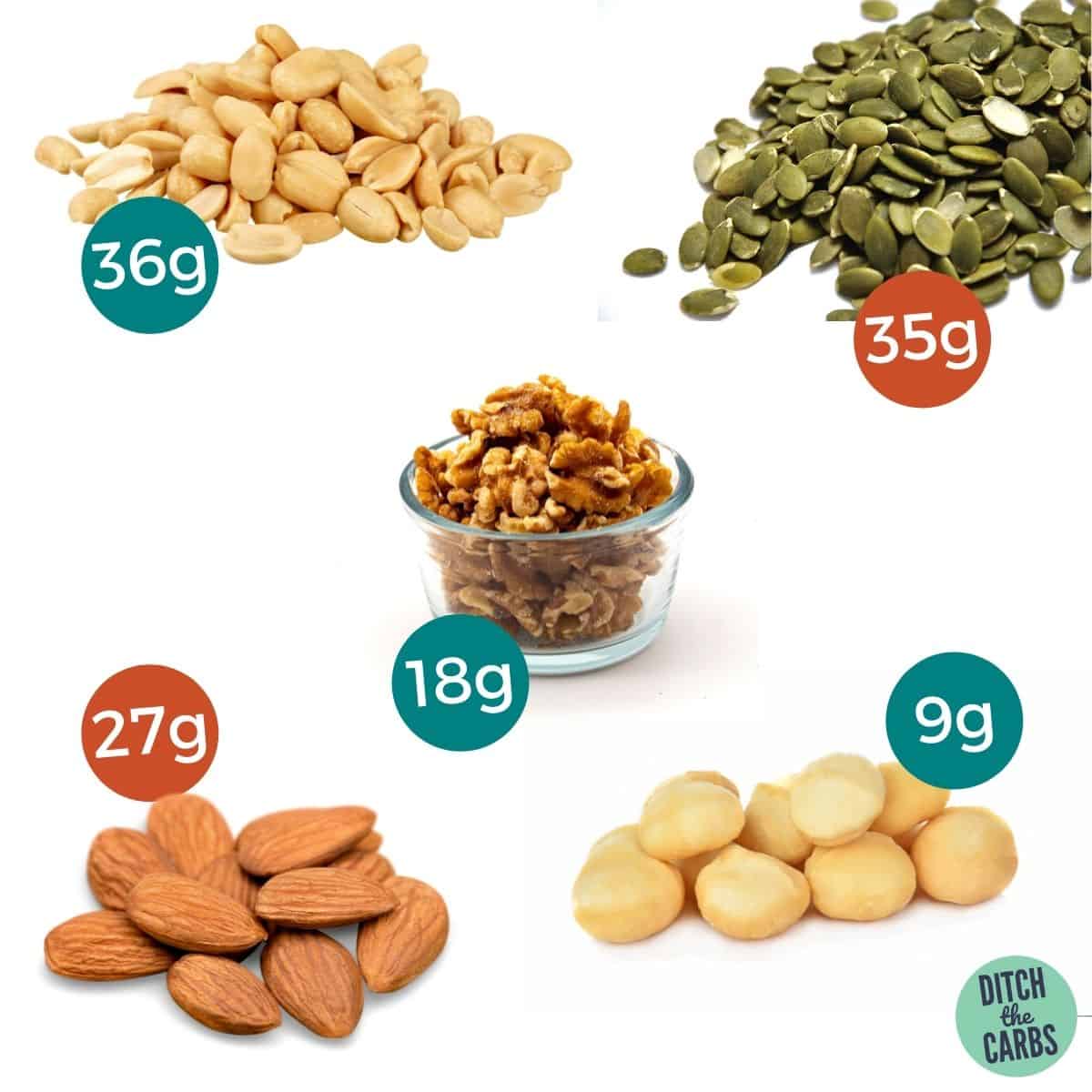
These are the best protein charts showing high-protein low-carb nuts and seeds. You can see exactly how many grams of protein, fat, net carbs, and calories are in each different nut and seed.
Cooked lentils and whole grains are often the most common alternative to animal proteins, but they are both high-carb.
But don't worry, there are plenty of plant-based foods and plant proteins that have a wide variety of amino acids and are healthy protein foods for low-carb vegetarians.
First, peanut butter has a high protein content. There are 8 grams of protein in 2 tablespoons of peanut butter.
Nuts and seeds are a great way to increase your protein intake. The most popular types are sunflower seeds and pumpkin seeds. However, you will need to be mindful of the carb count - see more in this article about low carb nuts and seeds.
High-protein fruit and vegetables
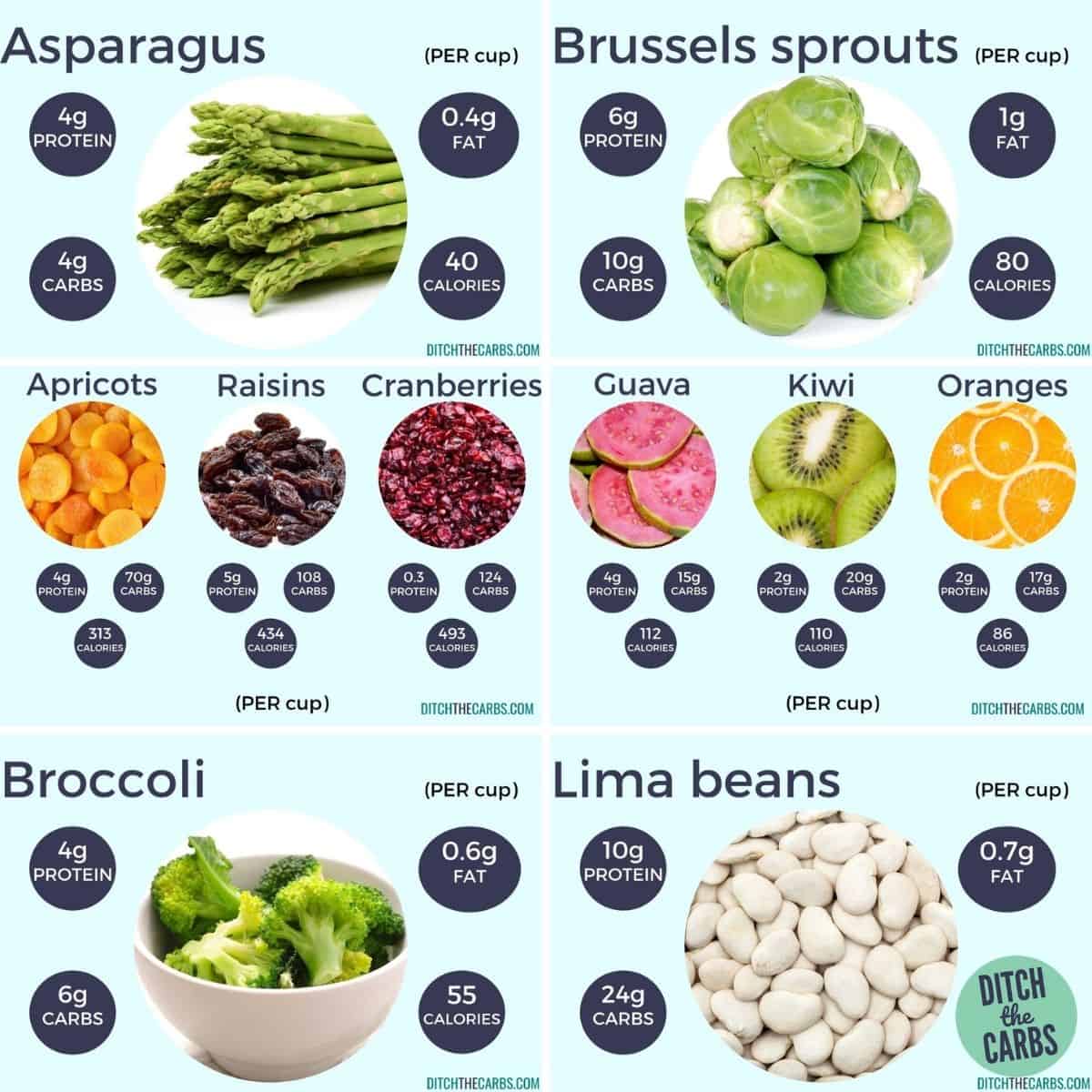
What are the best high-protein fruits and high-protein vegetables?
These protein charts for fruits and vegetables will show you exactly which have the highest protein and 14 delicious recipes to use them.
If you are on a low-carb vegetarian diet, you need to balance protein and carbs wisely. These easy fruit and vegetables protein charts will show you how to build a high-protein low-carb vegetarian meal plan.
High-protein dairy

Dairy protein can be so versatile. It can be used in sweet and savory recipes and can be eaten as a snack or part of the main meal.
If you don't want to eat meat, but don't mind eating other animal foods, full-fat dairy can help you get enough protein in your day and you also get calcium for bone health.
Cottage cheese is a lean protein that is versatile and low in calories. Cottage cheese can be enjoyed as a quick protein snack, especially if you stir through a tablespoon of peanut butter and a sprinkling of pumpkin seeds for your B vitamins.
Final thoughts
As you can see, all kinds of meat have an excellent amount of protein and essential amino acids in them.
When you need to increase your intake of high protein foods, meat like lean pork, dark meat from chicken, or beef will give you essential amino acids and help you build lean muscle.
Always choose high-quality protein from an ethically raised source that is free of chemicals.
References and studies
Biochemistry, Essential Amino Acids - NCBI
What is the role of meat in a healthy diet? - PubMed
Unintended consequences: Nutritional impact and potential pitfalls of switching from animal- to plant-based foods. - NCBI
What is chicken plumping? - Wikipedia
Water in meat and poultry - USDA
Source: https://www.ditchthecarbs.com/meat-protein/
0 Response to "Protein in 3 Oz Roast Beef"
Publicar un comentario